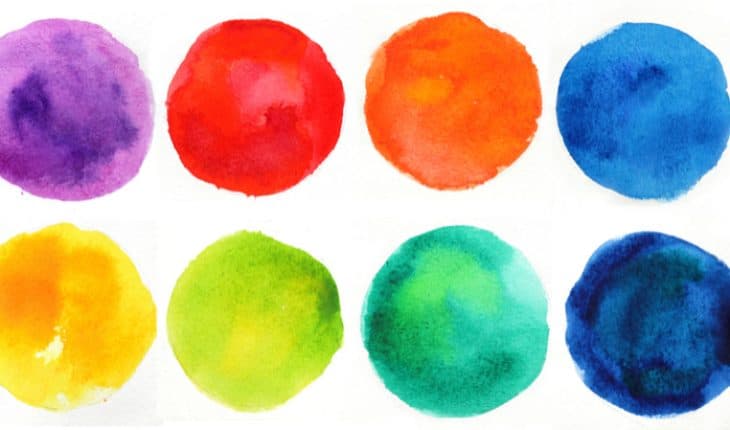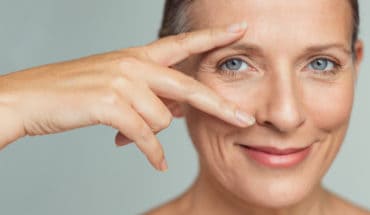We often talk about our moods in term of colours of the rainbow. Feeling blue, or green with envy? Or has a red mist come down lately? Certain tones, such as red, blue, yellow and green are known to have a psychological effect on us and enhance our feelings of wellbeing, or the opposite. If you’re seeing red because you are livid, you might wish to visualize soothing green instead. Or enervating yellow, playful pink, or calming blue. At the Horniman Museum, in London, ‘Colour: The Rainbow Revealed’ is an interactive exhibition showing until 28th October, created by the National Museums, Liverpool and funded by the National Lottery, exploring the endless ways in which colour shapes our world and influences our mood and the ways it used in nature and art. Highly popular, it has already been seen by more than one million people across Europe.
Dr Emma-Louise Nicholls, Deputy Keeper of Natural History, says: ‘Colour is everywhere – from butterflies and rainbows in nature, to fashion and media in the human world. Animals and plants have extraordinary abilities to use colour for survival; using different combinations of colours and patterns to communicate and interact with, or hide in, the world around them.
Animals and plants have extraordinary abilities to use colour for survival; using different combinations of colours and patterns to communicate and interact with, or hide in, the world around them.
A red toadstool with white spots says ‘stay away’, the stripes of a tiger allow it to blend in, enabling this large animal to be a stealthy hunter, whilst the stoats in the exhibition show how this species can go from brilliant white in winter to a rich brown in the summer, in order to camouflage with the environment.’
There is nothing new about colour therapy which has been around for 3,000 years, or more and is practised around the world. Hindu holy men linked the colour spectrum to the body’s seven vital chakras and the ancient Egyptians wore jewellery with colourful sacred stones. Some scientists believe that our reactions to colours evolved to help us survival, others think that it relates to unconscious powers of association (for example red may make you feel anxious, if it reminds you of blood).
Through hands-on exhibits and exciting games and challenges, visitors to this imaginative, award-winning exhibition can explore the science of colour and discover the fascinating ways it influences people, nature and culture around the world. Peer through a giant human eyeball to discover how we see and interpret colour; find out how and why some animals use colour to camouflage themselves or to attract a mate; look at how different colours mean different things for people across the planet; and learn about the surprising origins of some paints and dyes – from crushed up mummies to cows’ urine!
Even chronic illnesses can be influenced by colour, by affecting mood, emotions and energy levels. It is therefore important for hospitals and medical centres to create a calming environment to help put patients and visitors at ease and have a positive effect on patients’ wellbeing and improve staff morale.
Even chronic illnesses can be influenced by colour, by affecting mood, emotions and energy levels. It is therefore important for hospitals and medical centres to create a calming environment to help put patients and visitors at ease and have a positive effect on patients’ wellbeing and improve staff morale.
Colours can encourage a therapeutic impact. Yellow, for example, is thought to be enervating and promote energy and happiness. However, too much yellow, or too bright a yellow is likely to have a negative effect. Stress may be eased with calming blues and greens, as these colours evoke the colours of nature, reminding us of trees, fields, rivers, the sea and summer skies and are popular in hospitals.
On the other hand red is linked to love and lust in humans, as well as animals, like baboons whose bottoms redden to attract mates. Perhaps human aren’t so different as a 2010 study in the European Journal of Social Psychology revealed that men found a slightly attractive woman more alluring when she was wearing a red top. In another study 288 women rated men wearing red as more powerful and desirable. Another study carried out by anthropologists from the University of Durham, at the Greek Summer Olympics in 2004, revealed that athletes improved their performances by wearing red. The scientific explanation for the power of red as that seeing red releases adrenalin into the bloodstream thus causing a burst of energy. In China red symbolizes luck and good fortune.
Although yellow is stimulating for the mind and appetite, yellow-green is associated with vomit and envy.
De-stress after a pressured week at the NHS with an Art Machine to create your own vibrant masterpiece. Or you and your family could experiment with a Mood Room to find out how colour can influence the way you feel; and a Colour Café to learn why certain colours tempt your taste buds, Colour: The Rainbow Revealed gives a dazzling insight into the wonderful world of colour.
Colour: The Rainbow Revealed is open until Sunday 28 October 2018, at the Horniman Museum, 100 London Road, Forest Hill, London SE23 3PQ
- People’s Choice Victory for Down’s Syndrome Scotland Garden at Chelsea 2025 - 28th May 2025
- Cadogan: A Chelsea Family By Tamsin Perrett - 3rd May 2025
- Dream Worlds a new exhibition in Cambridge - 14th December 2024






